Some common animals that feast on peanuts include squirrels, mice, woodpeckers, crows, chipmunks, raccoons, pigs, and an array of bird species such as cardinals, blue jays, and dark-eyed juncos. These animals benefit from the high protein, fat, and energy content of peanuts that play a vital role in their daily diet and energy requirements.
Peanuts, a popular and nutritious snack enjoyed by humans around the world, provide an excellent source of energy and nourishment not only for us but also for a variety of wildlife species. These legumes, often mistaken for nuts, attract different animals, offering them numerous health benefits when consumed in moderation.
Although peanuts are useful food sources for many wildlife species, it is essential to keep in mind responsible feeding practices when aiming to attract or support these creatures in our backyards. Regularly providing access to peanuts and other foods helps to encourage the thriving presence of these fascinating animals, allowing us to observe and appreciate the richness of animal life.
Mammals That Eat Peanuts
Elephants

Elephants are known to enjoy a variety of foods, and peanuts are no exception. These large herbivores can consume peanuts both in their shell and shelled. Peanuts provide a good source of energy and essential nutrients for elephants, such as protein, healthy fats, and vitamins. However, it’s important to note that peanuts are not a natural part of an elephant’s diet and should be offered only as an occasional treat when they are in captivity.
Squirrels
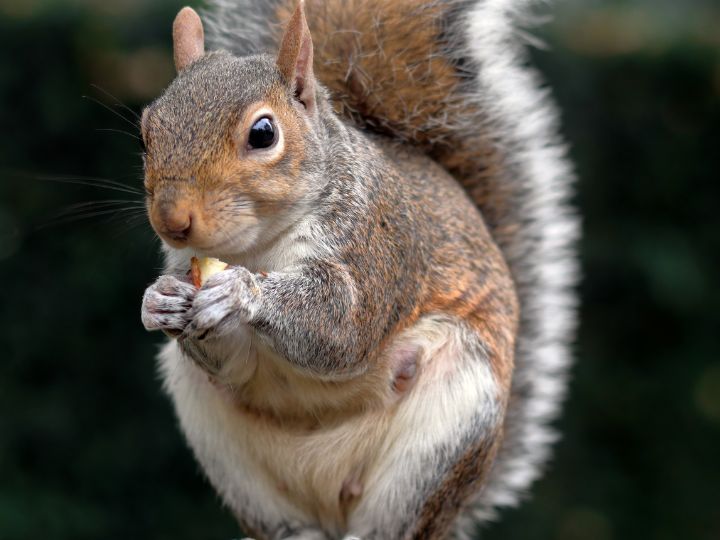
Squirrels are perhaps the most well-known mammal that enjoys eating peanuts. They are skilled foragers and can break open the peanut shells to access the nutritious nuts inside. Squirrels eat a variety of nuts, including hazelnuts, walnuts, and acorns, but peanuts are also a favorite. The average squirrel consumes around one pound of food a week, often including peanuts. They also store nuts and other foods for the winter to ensure a constant food supply.
Chipmunks
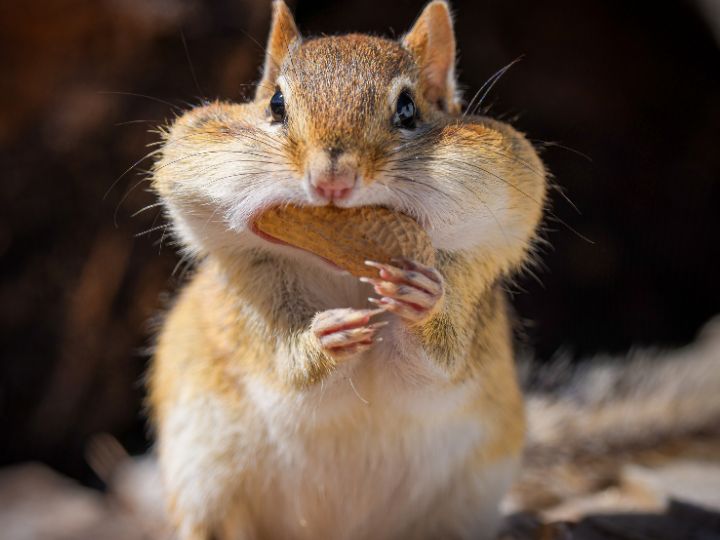
Chipmunks are another mammal species that are fond of eating peanuts. Similar to squirrels, they also forage for a range of nuts and seeds in their natural environment. They tend to eat peanuts whole, including the shell, and do so with great enthusiasm. This provides them with essential nutrients that they require for their high-energy lifestyle. Just like other mammals, chipmunks should consume peanuts in moderation as part of a diverse and balanced diet.
Birds That Consume Peanuts
Peanuts are an excellent source of protein and fat for many birds. In this section, we will highlight three bird species that are particularly fond of peanuts: Blue Jays, Woodpeckers, and Titmice.
Blue Jays
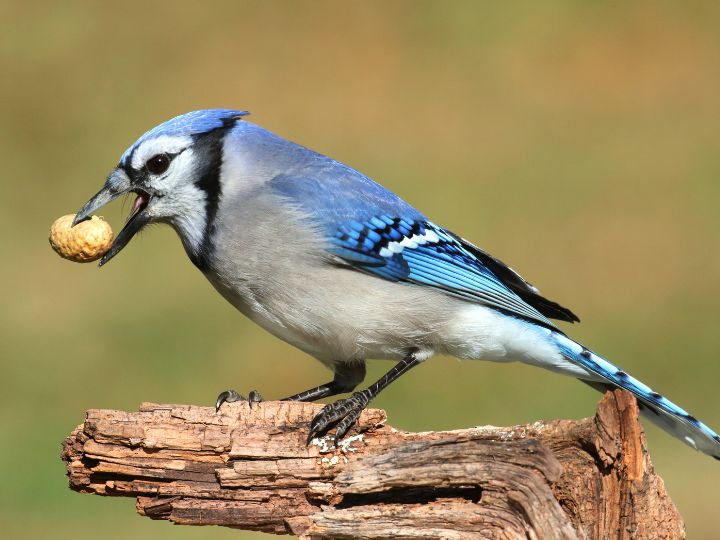
Blue Jays are attracted to peanuts for their nutritional value and have been known to frequent backyard bird feeders containing peanuts. They often pick up peanuts with their bill, sometimes carrying several at a time, and fly to a safe perch to crack open the shells and consume the peanut inside. Some key points about Blue Jays and their peanut consumption:
- Blue Jays are omnivores and include various types of nuts, seeds, and insects in their diet.
- Peanuts in the shell or shelled peanuts both attract Blue Jays to bird feeders.
- They can be territorial and may drive other birds away from the bird feeder.
Woodpeckers
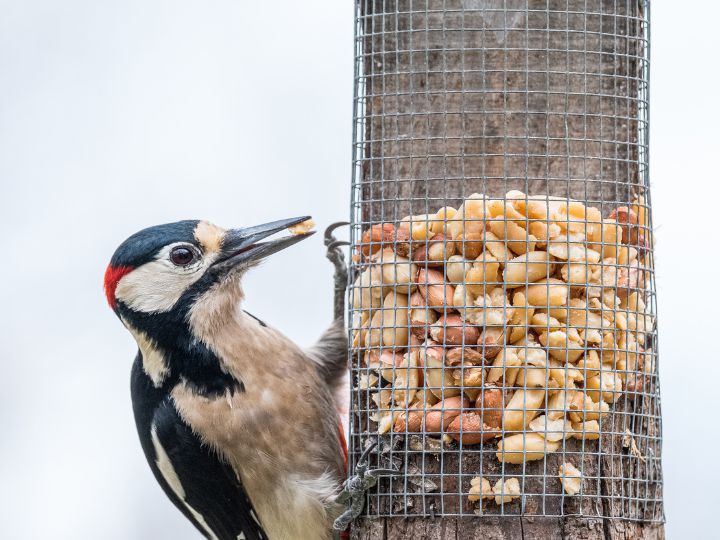
Various species of woodpeckers enjoy eating peanuts as part of their diet. In particular, the Downy Woodpecker is known to visit feeders for suet, seeds, and peanuts. Here are some notable points about woodpeckers and peanuts:
- Woodpeckers have been observed taking whole peanuts from feeders, as well as peanut bits.
- Peanut bits mixed with suet are a favorite among woodpeckers.
- Providing peanuts at backyard feeders can attract different species of woodpeckers, including the Downy, Hairy, and Red-bellied Woodpeckers.
Titmice
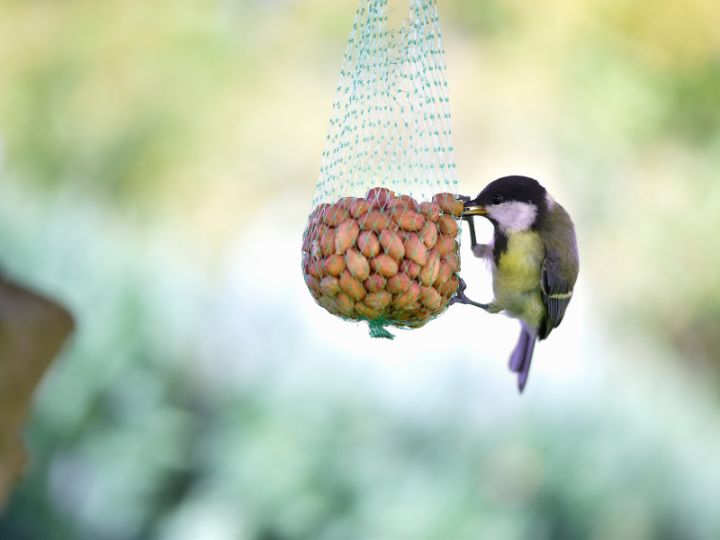
Titmice, such as the Tufted Titmouse, are small songbirds that also enjoy peanuts as part of their diet. They often visit bird feeders for seeds and peanuts, and their acrobatic abilities make them fun to watch. Here are some facts about Titmice and peanuts:
- Titmice have been observed extracting peanuts from feeders and carrying them off to eat elsewhere.
- They tend to favor shelled peanuts over peanuts in the shell.
- In addition to peanuts, Titmice consume insects, seeds, and berries as part of their diverse diet.
Insects Attracted to Peanuts
Peanuts are not only consumed by humans and larger animals but also attract a variety of insects due to their rich nutritional content.
Ants
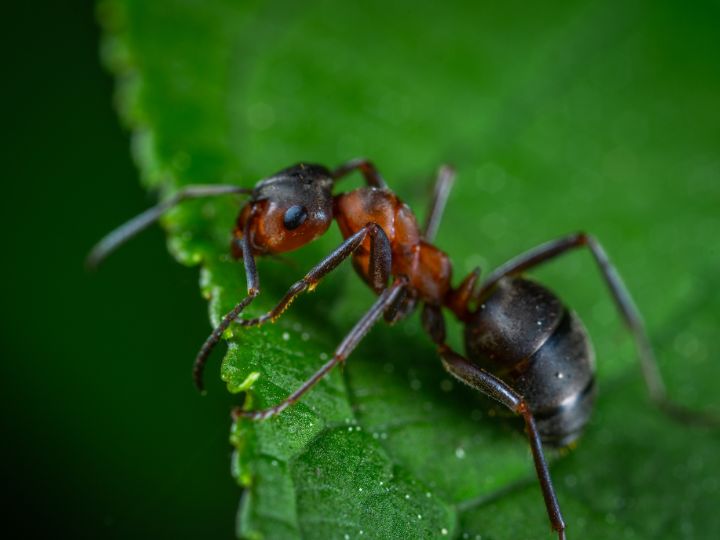
Ants are a common insect that’s attracted to peanuts. They are drawn to the protein and fat found in peanuts. As social insects, ants work together to collect food for their colony. In many cases, you may notice multiple ants carrying small pieces of peanuts back to their nest. Some specific species of ants that are known to be attracted to peanuts include:
- Carpenter ants
- Fire ants
- Pavement ants
It is crucial to properly store peanuts and peanut products to avoid attracting ants into homes, as some of these species can cause damage or create infestations.
Caterpillars
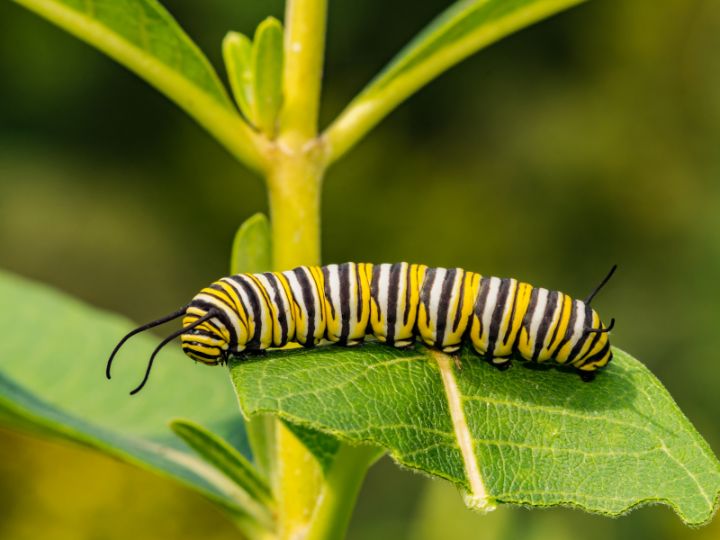
Caterpillars, specifically corn earworms and tobacco budworms, are known insect pests that can infest peanut crops. These caterpillars feed on the plants, impacting the development of the peanuts. While caterpillars may not directly consume peanuts as food, their presence on peanut plants can cause significant damage and reduce yield. Some tactics for managing caterpillar infestations in peanut crops include:
- Regular crop monitoring
- Introducing natural predators
- Using insecticides when necessary
By maintaining a healthy peanut crop and employing proper pest management strategies, the impact of these caterpillars on peanut production can be minimized.
Frequently Asked Questions
Becky is a fervent wildlife enthusiast and pet care expert with a diploma in canine nutrition. Her love for animals stretches beyond the domestic, embracing the wild tapestry of global fauna. With over a decade of experience in animal welfare, Becky lends her expertise to OutlandishOwl through insightful articles, captivating wildlife information, and invaluable guidance on pet nutrition. Her work embodies a deep commitment to understanding the intricate lives of animals and a passion for educating others on sustaining natural habitats. Becky's hands-on conservation efforts and her knack for translating complex dietary science into practical pet feeding tips make her an indispensable voice for creatures great and small.



